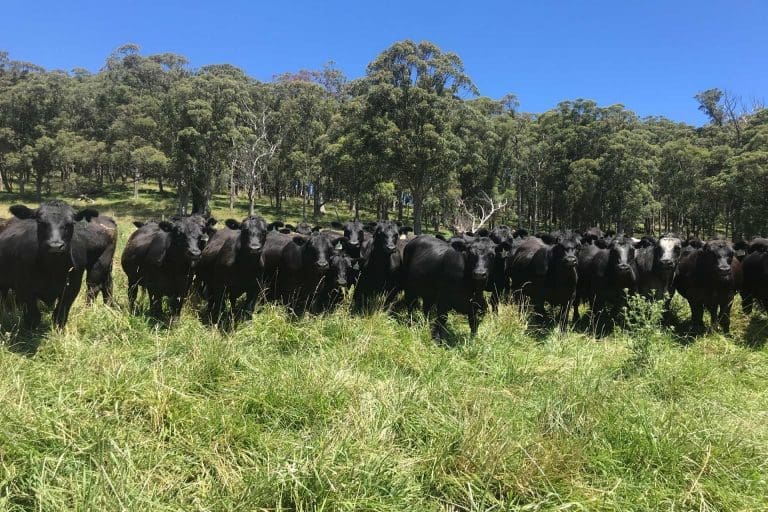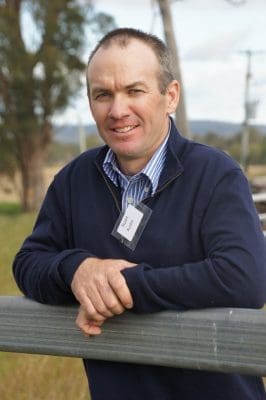In a ground-breaking move for the Australian livestock industry, a New England cattle business has sealed a significant sale of carbon credits to one of the world’s leading technology companies.
The carbon credits have been verified and sold by the US-based Regen Network, under their CarbonPlus scheme, as part of the recently-announced carbon offset initiatives by Microsoft.
The soil carbon gains have been made by Ebor-based Wilmot Cattle Company as a result of enhanced grazing management over the last three years on two of Wilmot’s properties in northern NSW.
The general manager of Wilmot Cattle Company, Stuart Austin, said the company had focussed on better grazing management over the last few years in order to increase efficient use of pasture and build resilience to drought.
“Grazing management has become an important focus of this business over the last few years and has resulted in a boost to productivity and to profit, and to ensuring that we are not overgrazing through drought years. The prospect of being paid for carbon sequestration while building a resilient landscape has encouraged this change and will ensure its permanency,” he said.
Armidale-based ImpactAg Partners is advising Wilmot Cattle Company on its soil carbon strategy.
ImpactAg’s natural capital specialist, Toby Grogan, said the deal demonstrates the win-win outcomes of enhancing farm productivity through increased soil health while creating significant surplus carbon credits for trading with third party emitters.
“This is an indication of what is going to be possible in the future for farmers who are focussing on their soil health and particularly on how they can enhance their soil carbon.
“While the market for soil carbon credits is in its infancy, as measurement techniques evolve and become more sophisticated, we believe there will be many more opportunities of this sort for Australian farmers”, Mr Grogan said.
Wilmot Cattle Company’s tranche of carbon credits is valued at over $500,000.
They are branded CarbonPlus Grassland Credits, and Wilmot is the first company in Regen Network’s portfolio to sell credits based on soil organic carbon sequestration achieved through rotational grazing.
Each CarbonPlus Grassland Credit represents 1 metric tonne of sequestered carbon as soil carbon in these productive grazing enterprises.
The “Plus” designation recognises the significant environmental and agronomic co-benefits achieved in addition to the carbon sequestration. Co-benefits include better water retention, enhanced pasture and farm-scale biodiversity, reduced need for expensive inputs such as chemical fertilizers, and the virtual elimination of soil erosion.
Alasdair MacLeod, Chairman of the Macdoch Group, which owns Wilmot Cattle Company and is a shareholder of ImpactAg Partners, said he believed this is a major step forward for the livestock industry. “Instead of being part of the environmental problem, we believe that well managed livestock can be part of the solution to the challenge of carbon emissions.
“There is a great deal of work still to be done to refine carbon farming techniques and soil carbon measurement methodologies, but here is justification for the emphasis that the Australian Government has put on soil carbon as a major contributor to the country’s decarbonisation strategy.
“Our team is currently working with the Clean Energy Regulator to help develop the regulated market for soil carbon credits in Australia and, as a result of this work, we hope that soil carbon projects will become widely available to Australian farmers in the near future,” Mr MacLeod said.
He added that another of his group’s companies, Maia Technology, worked with Resource Consulting Services to develop the software and training modules used by Wilmot Cattle Company, and that Maia and RCS are developing training modules to help other graziers improve their soil health, including carbon, while building business resilience.
Source: Wilmot Cattle Company



Several questions about this scheme
1. Is carbon being sequestered or just cycled in these grazing systems?
2. Are the emissions from the livestock grazing (methane) and the fertiliser (nitrous oxide) being accounted for in this calculation?
3. How long is this contract for…100 years, 1000 years, does it cover the energy released from fossil fuels
4. Will repayments need to be made if there are drought conditions affecting pasture growth as in 2018-19?
There is the force of plant succession to contend with in maintaining grassland. In moisture regimes over 20″ rainfall e/year it takes grazing ungulates + some human input to arrest woody incursion onto grasslands. The original human input was fire, more likely to be diesel fuel for mowing now, both releasing carbon. But the grasses and their fungal and microbial allies will draw down and pack away multiples of the carbon released in grazing operations, ESPECIALLY with proper rotation, repeated pruning of roots to add to SOC. Unlike forests, grasslands put the carbon underground, where it will stay for a while. Looking to grasslands to battle climate change.
In evolutionary terms the planet’s grazers are the rangeland and open woodland ‘gardeners’ tasked with the job of trimming to encourage plant density, and trimming to reduce fire load, pasture seed dispersal to extend the range of plants rooted to the ground and other tasks such as fertilization and tracking pathways that work to reduce sheet erosion in hilly country. If grazing animals didn’t exist we would have to invent them to manage the fertile terrestrial landscapes of our planet. Fencing does stop them in their natural nomadic path but paddock rotation well managed basically ‘jumps’ fences.
Paul Franks comments are worth thinking over and thanks to Mike for the links to the information.
Projects really need to last 100 years, they take a little while before credits can be calculated, 5 years is suggested, further the landowner is liable to refund and repay credits if things go dry or carbon storage fails to be significant.
I have been rotational grazing for 15 years on floodplain country with high annual rainfall, conditions I am told are favourable to carbon capture. The benefits in productivity , weed control and herd behaviour look to outdistance this potential alternative income stream but it could be useful if you have the correct soils and rainfall.
As such it does look like a fine field within which to go looking for customers but I think Paul might be right that this market is more for corporates or carbon aggregators looking for quick $$ now while others look after the Carbon for the 100 years.
I wonder what the land values will be like since that land now has a perpetual liability on it. It really is one of the more absurd ideas you read about. I imagine the land will have to be tested for perpetuity now to make sure that carbon does not escape. If it does escape then the land owner will be liable and have to pay money back. Or will sometime down the track the entire thing be forgotten rendering the entire exercise totally pointless and was nothing more then shuffling money around?
Also does the measuring of offsets also include the assessors carbon emissions and the emissions of the company doing the assessing. To me it reads up like some scheme for people in the middle to make money, which ironically will probably then be used to consume and emit more emissions.
Looks like you want more information this is a great place to start.
http://www.cleanenergyregulator.gov.au/csf/how-it-works/explore-project-types/Pages/soil-carbon-projects.aspx
Sadly it seems your link only makes the entire scheme look even less like something that is for trapping CO2 long term and more like a money making scheme to transfer money from people to person.
It says the carbon only needs to stay in the ground for 25 or 100 years. What is the point of that? If it is simply replacing now burnt fossil fuels that were in the ground for millions of years, then the newly sequestered carbon needs to stay in the ground for the same period of time. Otherwise what is the point if after twenty-five or one hundred years you are releasing it again? On top of that if the people making the money spend that money on consumerism that releases even more CO2 created from burning fossil fuels into the atmosphere, then you are even worse off down the track.